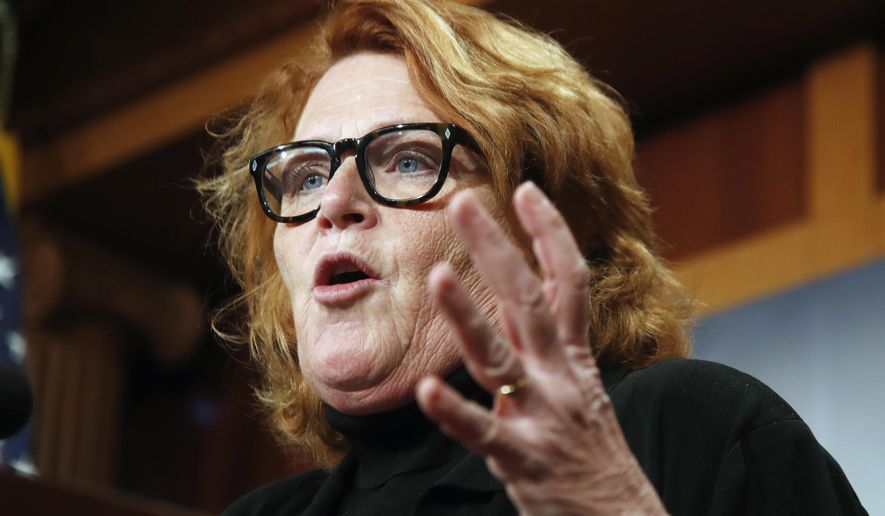Promises of bipartisanship evaporated as soon as Republicans rolled out a tax reform framework, as the few Democrats who earlier signaled a willingness to work on the issue joined their party leaders in denouncing the plan as a windfall for the wealthy.
Even the handful of vulnerable Senate Democrats whose support was targeted by President Trump ran for cover when the plan emerged.
The White House insisted Thursday that the reforms were geared toward the middle class and that Democrats would get on board as lawmakers hammer out details in the legislative process. But the overwhelming and fierce opposition from Democrats did not bode well for teamwork going forward.
Democratic lawmakers have privately indicated that their opposition is more about sabotaging Mr. Trump than the merits of the tax plan, said Rep. David Schweikert, Arizona Republican.
“It’s sort of perverse, but that’s the world we’re in,” said Mr. Schweikert, a member of the tax-writing House Ways and Means Committee.
“They understand the desperate need for the economic growth,” he said of his Democratic colleagues. “But they almost make it clear — they almost can’t say that in front of a microphone [that] what would be actually good for workers might also be good for this president. And anything that’s good for this president, if you’re Democrat you cannot embrace.”
Indeed, Mr. Trump is desperate for a legislative win, and tax reform is the cornerstone of his economic agenda.
The loyal opposition is loath to help.
Rep. John A. Yarmuth of Kentucky, the top Democrat on the House Budget Committee, had championed slashing the corporate tax rate, which is a major component of the Republican blueprint.
He changed his tune when the plan came out, calling it “an outrageous giveaway to wealthy Americans and large corporations at the expense of hardworking families and our country’s future.”
The inclusion of sweeteners for Democrats did nothing to garner even begrudging support. The sweetness included expanding the child tax credit and doubling the standard deduction that would effectively create a larger “zero tax bracket” at the bottom of the wage scale.
Most analyses of the plan determined that it would provide substantial benefits to the wealthy, who also pay most of the taxes.
Gary Cohn, the president’s chief economic adviser, pushed back against criticism that the plan was skewed toward the very wealthy and corporations.
“Our tax plan is aimed to return more income back to hardworking Americans. That’s what we’re trying to do here,” he told reporters at the White House.
He said reporters likely could find someone in the middle class who would not get a tax cut under the plan. But he said the vast majority would benefit.
Under current assumptions, he said, the average family with two children making $100,000 a year would save an extra $1,000.
Rep. Tim Ryan, Ohio Democrat, was heralded as a maverick for prodding his party to be more business-friendly and embrace pro-growth tax policies.
Then he saw the Republican tax plan.
“Instead of fixing our broken tax system, their idea of ’reform’ relies on the same supply-side, trickle-down economics that has failed American families for decades,” he said.
In the Senate, the vulnerable Democrats under pressure to back tax cuts either clammed up or dodged questions.
“The devil remains in the details — and we still need more details,” said Sen. Heidi Heitkamp, a North Dakota Democrat who accompanied Mr. Trump when he stumped for the plan in her home state.
Sen. Joe Donnelly, a Democrat who was in the crowd when Mr. Trump announced the framework in his home state of Indiana, also said he needs more details.
They are among the Senate Democrats up for re-election in states Mr. Trump easily won and could be key to getting a tax reform bill passed.
Democratic strategist Jim Manley predicted that Senate Republicans wouldn’t get any support from across the aisle if, as expected, they attempt to pass the bill using budget reconciliation rules to circumvent the 60-vote hurdle required to advance most legislation.
“As long as they are going to use the partisan reconciliation process to pass the bill out of the Senate, bipartisanship will be impossible,” said Mr. Manley, a former top aide to Senate Democratic leadership.
Pressed about whether the fierce partisanship in the chamber forced Republicans to use budget reconciliation rules, Mr. Manley called it a classic chicken-or-egg conundrum.
Mr. Trump and congressional Republican leaders were convinced they could garner Democratic support for a plan that they characterize as geared toward middle-class and economic growth.
House Ways and Means Committee Chairman Kevin Brady, Texas Republican, said he wasn’t giving up on working Democrats.
“They want a strong middle-class tax cut. So do we. They want to stop seeing jobs moving overseas. They want to have a tax code that starts to bring them back. So do we,” Mr. Brady said in a speech to the U.S. Chamber of Commerce.
“I’ve made it very clear that if [they’re] serious about lowering taxes, growing the economy, growing paychecks — we’re serious about working with you,” he said.
• S.A. Miller can be reached at smiller@washingtontimes.com.
• David Sherfinski can be reached at dsherfinski@washingtontimes.com.




Please read our comment policy before commenting.